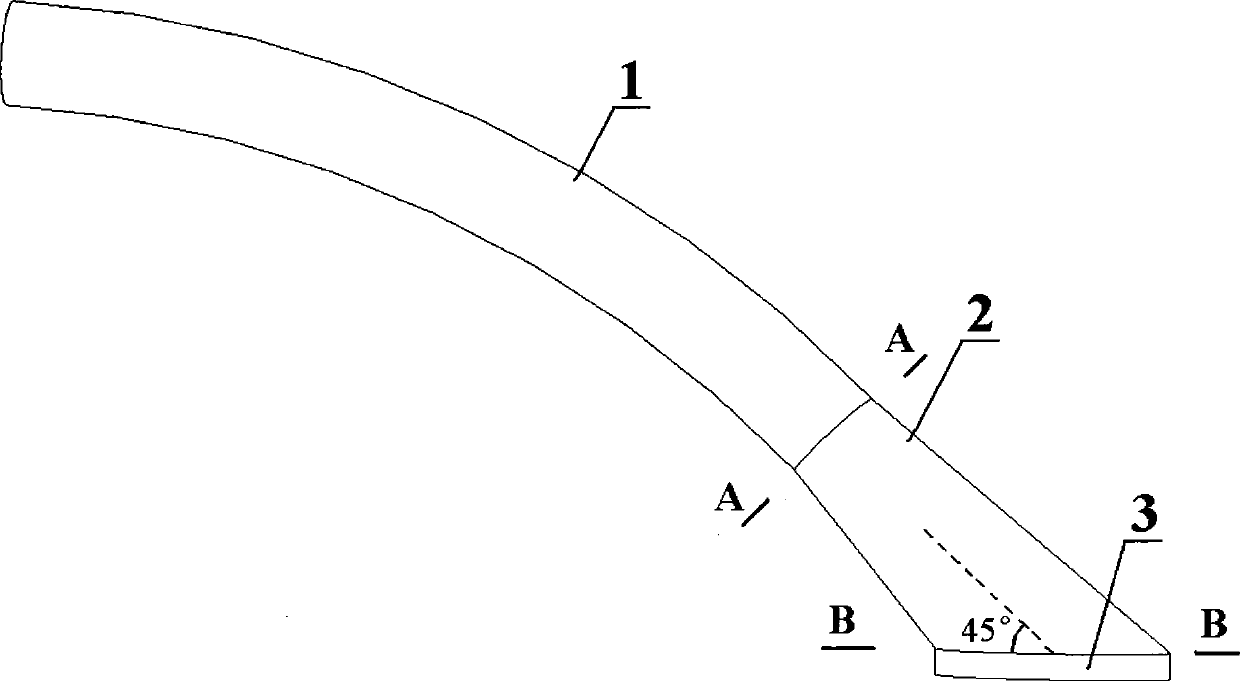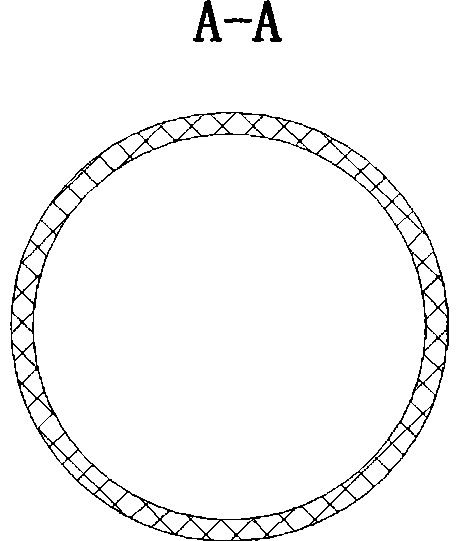Artificial blood vessel with bias current guide
An artificial blood vessel and introducer technology, applied in the field of artificial blood vessels, can solve problems such as downstream stenosis, and achieve the effects of reducing turbulence, preventing end restenosis, and improving the hemodynamic environment
- Summary
- Abstract
- Description
- Claims
- Application Information
AI Technical Summary
Problems solved by technology
Method used
Image
Examples
Embodiment Construction
[0015] Below in conjunction with accompanying drawing and specific embodiment the present invention is described in further detail:
[0016] Such as figure 1 As shown, the patent of the present invention consists of three parts: a common artificial blood vessel part, a bias flow guide part and a suture edge part. It is characterized in that the through-section of the bias flow guider at the end of the artificial blood vessel is composed of image 3 The circle shown gradually transitions to Figure 4 A semi-ellipse is shown, the major axis of the semi-ellipse is twice the length of the minor axis. During the transition process, the through-sectional area remains constant and the through-section is gradually shifted to the left or right, and the other side is filled with artificial blood vessel material. The transition length is 3 to 4 times the inner diameter of the artificial blood vessel. The angle formed between the end face of the introducer and the axis of the artifici...
PUM
 Login to View More
Login to View More Abstract
Description
Claims
Application Information
 Login to View More
Login to View More - R&D
- Intellectual Property
- Life Sciences
- Materials
- Tech Scout
- Unparalleled Data Quality
- Higher Quality Content
- 60% Fewer Hallucinations
Browse by: Latest US Patents, China's latest patents, Technical Efficacy Thesaurus, Application Domain, Technology Topic, Popular Technical Reports.
© 2025 PatSnap. All rights reserved.Legal|Privacy policy|Modern Slavery Act Transparency Statement|Sitemap|About US| Contact US: help@patsnap.com



